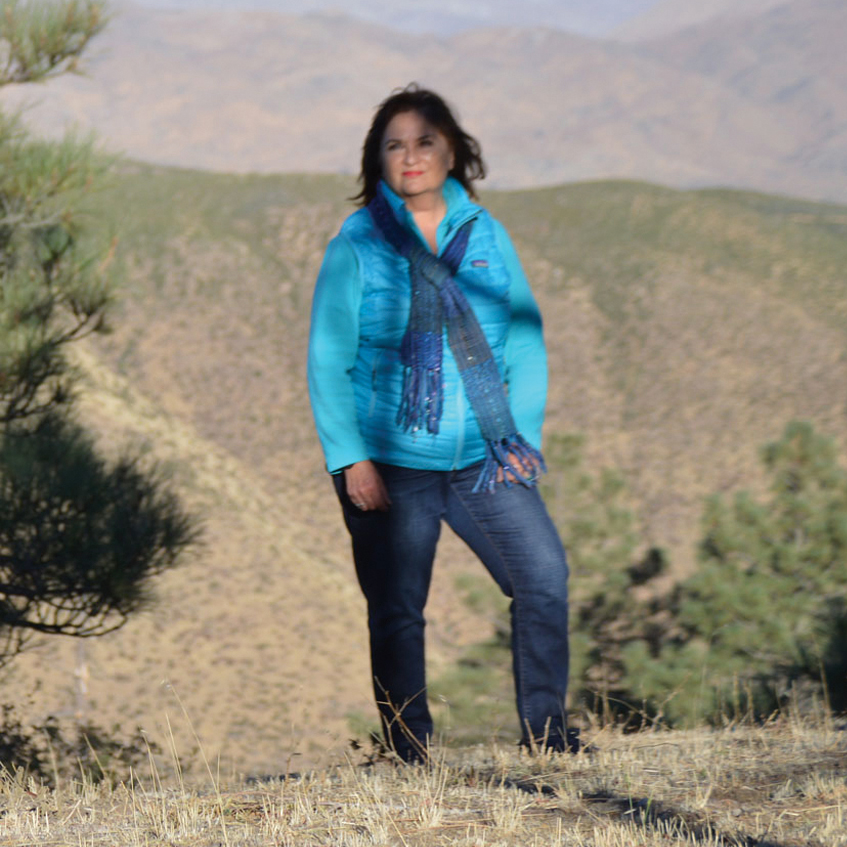Like a classic pearl necklace, it can be seen as a unifying symbol of beauty and harmony. This imagery has guided the creation of eight remarkable parks constructed over nearly two decades, 1994 to 2018. Together we know them as Pacific Rim Park, or PRP for short.
Each park reflects the cultures of its host country and the international participants involved in their park’s design and construction. This “art diplomacy” creates mutual respect and cooperation amongst sponsoring nations sharing the coasts of the Pacific Ocean; relationships that help secure a more peaceful future. As both enduring physical environments and ephemeral undertakings by people of different cultures working together, the parks also reveal the transformative power of art.
The vision for a Pacific Rim Park came from the imagination of artist James Hubbell, who lives in the mountains east of San Diego in Julian, California. When I began writing this book with him, he told me, “We have been given a special gift to live beside the magnificent Pacific Ocean, to be citizens of not only one city, but of an emerging Pacific Rim community.” Even though the sea is an hour’s drive from his house, it can be seen from his living room on some days.
Jim’s architectural work is often described as organic: attuned to earth, fire, sunlight, winds, and water, and always infused with a reverence for nature. He creates beauty and beautiful experiences that affect the way we live, think, and feel about the world around us — and ourselves. For him, the notion of beauty transcends what is illusory and self-centered. It comes from a balance of happiness and pain to shed light on what is good and true. Beauty springs from the joy and pathos of being human, like the birth of a pearl from an intruding, irritating grain of sand.
Jim’s studio art consists of a vast array of watercolors, sculptures, stained-glass windows, carved wooden doors, jewelry, buildings, and outdoor spaces often conveying themes linking the natural to the spiritual world. He refers to his built environments as reflecting an Architecture of Jubilation. He first studies his environment and then builds from the earth up using wood, concrete, metal, glass, stones, seashells, and bricks. Archetypal shapes, patterns, and mythical themes, along with plants and animals, permeate his structures. They embody both art and nature in ways that invite people to reconnect with life and their inner artist.
In 1982, Jim and his wife Anne founded the Ilan-Lael Foundation, an arts-education non-profit organization celebrating nature and the aesthetic of the built environment for their ability to help people see themselves and the world in new ways. The Hubbells are now in their late eighties and continue to guide Ilan-Lael’s sponsorship of public art projects, lectures, seminars, and exhibitions in San Diego and Tijuana. Ilan-Lael has initiated such programs in San Diego as ArtWalk, KidzArt, and an award-winning newsletter about San Diego’s urban development called Hidden Leaves. Through Hidden Leaves, Jim observed that San Diego lacked an image of itself as part of a far larger community — the many Pacific Rim countries and cultures that share the Pacific Ocean.
Thus began his long preoccupation with an ocean and its cradle of nations. In contrast to Atlantic cultures, being a member of this Pacific family offered a new way of seeing the world. Beyond our tendency to elevate the role of trade and commerce, the Pacific was where diverse Eastern and Western views of materialism, spirituality, nature, and humans collided and melded. For Jim, the building of site-art parks became an exploration into the creation of a new Pacific culture, and how park-making could become a journey of the soul.
Jim also understands that just as life is not lived in solitude, the creation of beauty must involve the interaction of others; that a connection with nature has to include a connection with the collective. Beginning with his own family and the building of their remarkable home, he began to involve others in the vision and construction of artistic environments. At first it arose from necessity, such as when financial resources were scarce and volunteers were needed to complete a fountain for the First Unitarian Church in San Diego. He saw how collaborators came with their own personal patterns and rhythms that shaped the outcome — and they, in turn, were changed. He wanted to apply this approach in a more concerted manner.
With this in mind, he sought out artist and kindred spirit, Milenko Matanovic, founder of the Pomegranate Center in Seattle, an arts organization that specializes in involving people who both create gathering places and integrate art into communities. Together, James and Milenko wanted to try out a new idea — could they bring together people of different backgrounds for the purpose of creating a shared artistic vision and community building? Their first opportunity to try out their concept came in 1990 through construction of the Kuchumaa Passage installation at Rancho La Puerta fitness resort and spa in Tecate, Mexico. It became a precursor to the Pacific Rim Park’s design-build method, and we begin our journey there.
